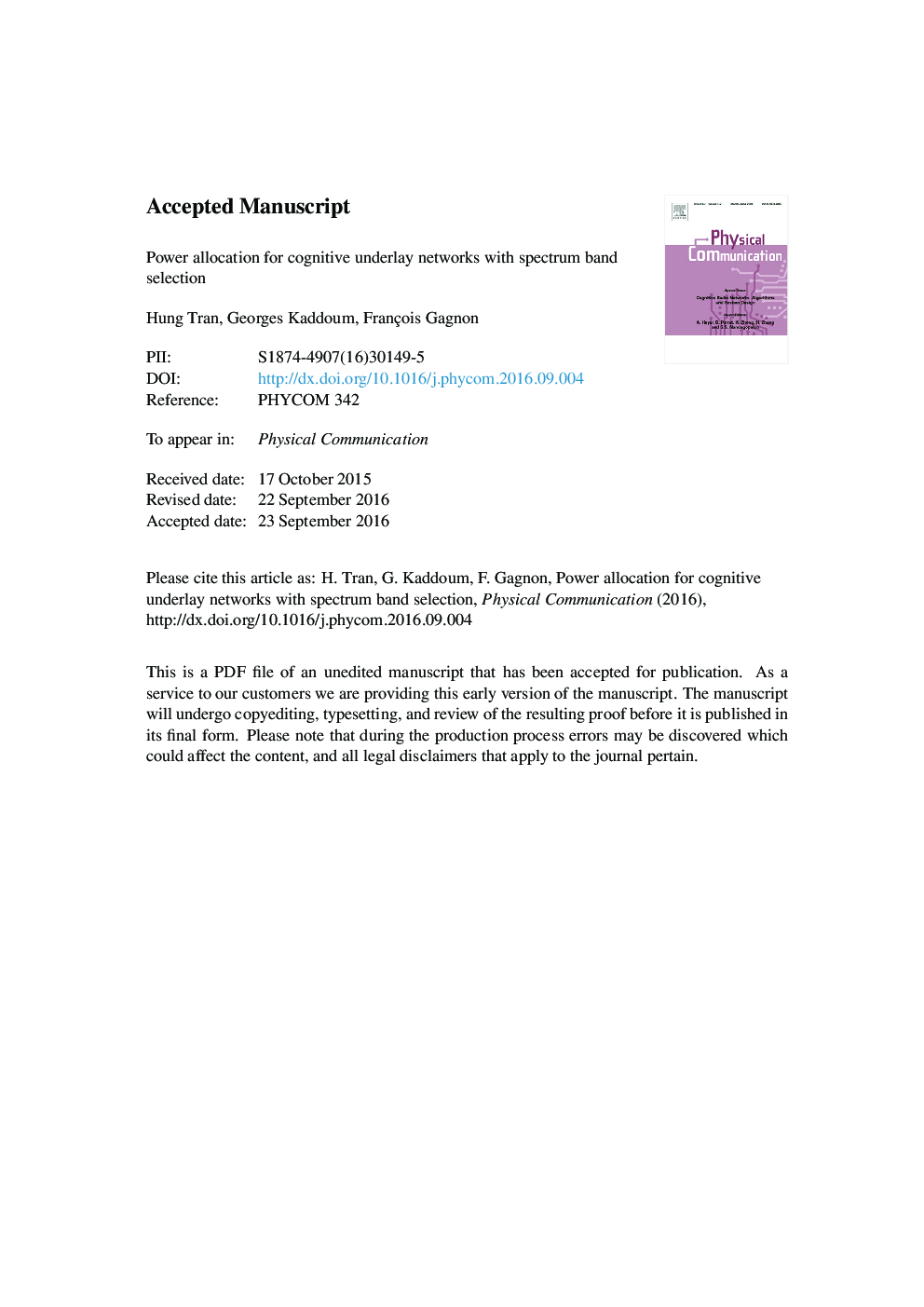| Article ID | Journal | Published Year | Pages | File Type |
|---|---|---|---|---|
| 4957622 | Physical Communication | 2016 | 25 Pages |
Abstract
In this paper, we study the cooperative communication of a cognitive underlay network by utilizing the diversity of multiple spectrum bands. In particular, we assume that the transmission power of the secondary user (SU) is subject to different joint constraints, such as peak interference power of the multiple primary users (PUs), peak transmission power of the SU, outage tolerate interference, and outage probability threshold. Accordingly, two power allocation schemes are considered on the basis of the minimum interference channel from the SU to the PU and the channel state information of the primary user link. Furthermore, the SU can select one of the three transmission modes following the channel state conditions, namely as cellular, device-to-device, or switching mode, to transmit the signal to the secondary user receiver. Given this setting, two power allocation schemes over a spectrum band selection strategy are derived. In addition, closed-form expressions for the outage probability of three modes are also obtained to evaluate the performance of the secondary network. Most importantly, a closed-form expression for the peak interference power level of the PU, which is considered as one of the most important parameters to control the SU's transmission power, is derived by investigating the relation of two considered power allocation schemes in the practise. Finally, numerical examples show that the outage performance of secondary network in the switching mode outperforms the one of the cellular and device-to-device (D2D) mode for all considered power allocation schemes.
Related Topics
Physical Sciences and Engineering
Computer Science
Computer Networks and Communications
Authors
Hung Tran, Georges Kaddoum, François Gagnon,
